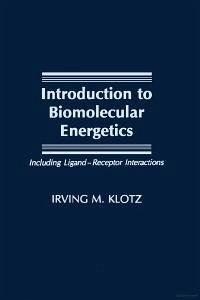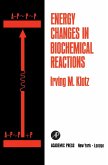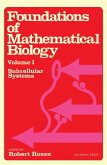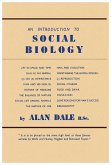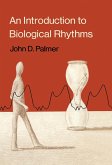Introduction to Biomolecular Energetics Including Ligand-Receptor Interactions focuses on the concepts of energetics and their biological applications, including the study of ligand-receptor interactions. The book provides quantitative calculations and addresses topics that have become more prominent in the biochemical and related sciences in recent years, including the first and second laws of thermodynamics, the concept of entropy, free energy or chemical potential, group-transfer potential, physicochemical behavior, and enzyme kinetics.
This volume is organized into 10 chapters, and it begins with an overview of the scope of energetics and two general approaches to the field: the classical or phenomenological approach and the statistical-molecular approach. The chapters that follow explore the concepts of energy and entropy in the context of the first and second laws of thermodynamics, along with the relationships between work, heat, energy and entropy as an index of exhaustion. The discussion then shifts to the free energy function and general procedures for computing standard free energies. The book also introduces the reader to the fundamental relationship between chemical potential (free energy) and concentration; high-energy bond and the concept of group-transfer potential; the use of thermodynamic methods in the analysis of physicochemical behavior; and statistical thermodynamics. The final chapter examines the number of ligands that are bound by the receptor entity, how strongly the ligands are held, and the molecular nature of the forces of ligand-receptor interaction.
This book will be of interest to biologists and those who want to understand the principles of energetics governing biochemical changes.
This volume is organized into 10 chapters, and it begins with an overview of the scope of energetics and two general approaches to the field: the classical or phenomenological approach and the statistical-molecular approach. The chapters that follow explore the concepts of energy and entropy in the context of the first and second laws of thermodynamics, along with the relationships between work, heat, energy and entropy as an index of exhaustion. The discussion then shifts to the free energy function and general procedures for computing standard free energies. The book also introduces the reader to the fundamental relationship between chemical potential (free energy) and concentration; high-energy bond and the concept of group-transfer potential; the use of thermodynamic methods in the analysis of physicochemical behavior; and statistical thermodynamics. The final chapter examines the number of ligands that are bound by the receptor entity, how strongly the ligands are held, and the molecular nature of the forces of ligand-receptor interaction.
This book will be of interest to biologists and those who want to understand the principles of energetics governing biochemical changes.
Dieser Download kann aus rechtlichen Gründen nur mit Rechnungsadresse in A, B, BG, CY, CZ, D, DK, EW, E, FIN, F, GR, HR, H, IRL, I, LT, L, LR, M, NL, PL, P, R, S, SLO, SK ausgeliefert werden.

